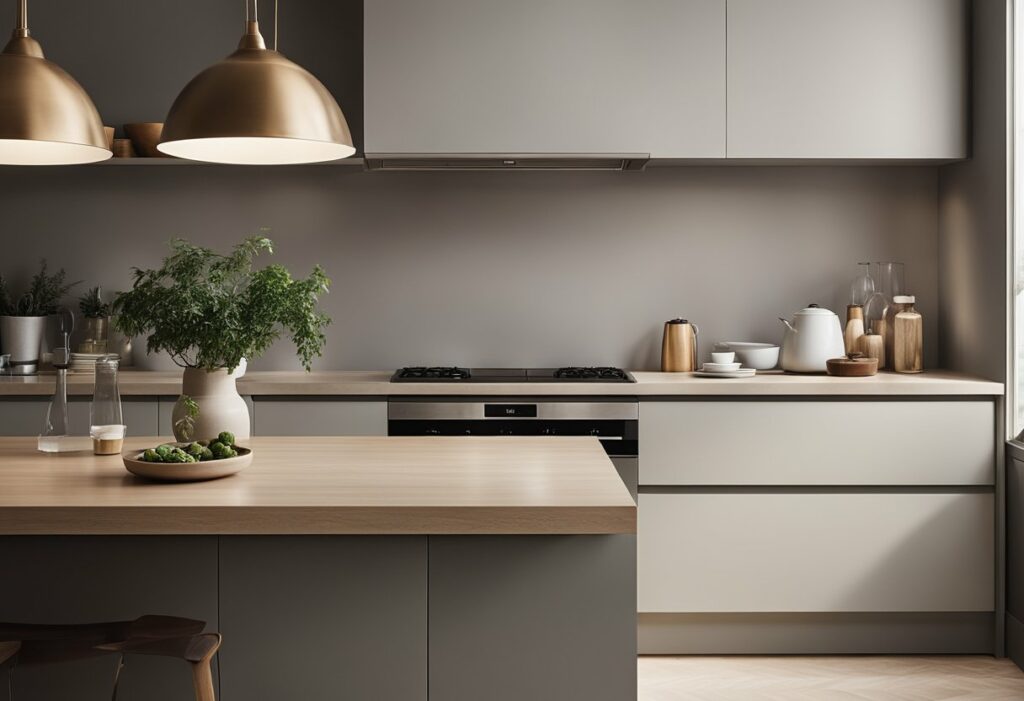Japanese Minimalist Kitchen Design: The Beauty of Simplicity
If you’re looking to create a kitchen that is both functional and beautiful, you might want to consider Japanese minimalist kitchen design. This style is inspired by Japanese culture, which values simplicity and minimalism. In a Japanese minimalist kitchen, you’ll find clean lines, natural materials, and a focus on practicality.
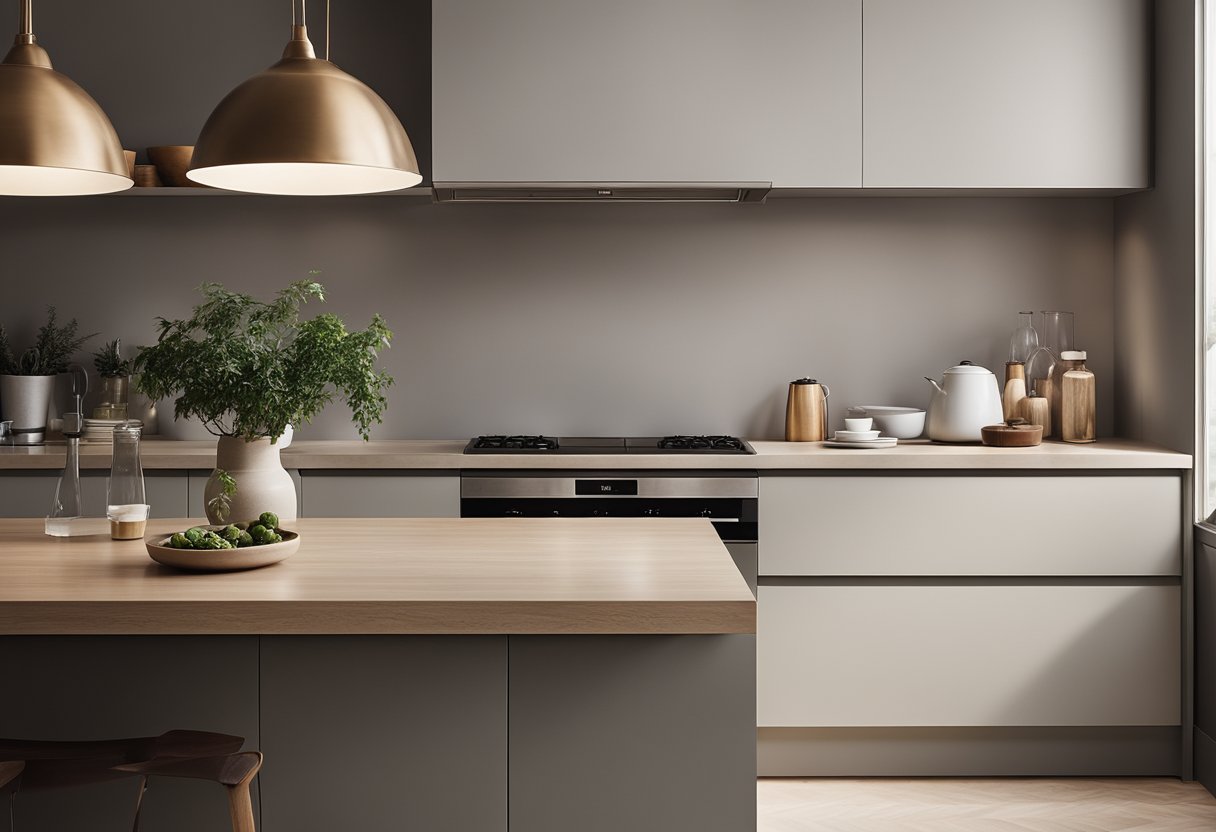
One of the key principles of Japanese minimalist kitchen design is simplicity. This means that the design is focused on functionality rather than aesthetics. You’ll find that the cabinets are understated and the overall design is clean and uncluttered. This doesn’t mean that the kitchen is boring, however. Japanese minimalist kitchen design is all about finding beauty in simplicity, and you’ll find that the design is both elegant and sophisticated.
Another important aspect of Japanese minimalist kitchen design is the use of natural materials. You’ll find that wood is a common material in this style, as it is both durable and beautiful. Other materials that are often used include stone, bamboo, and paper. These materials are chosen not only for their beauty but also for their durability and sustainability.
Key Takeaways
- Japanese minimalist kitchen design is inspired by Japanese culture, which values simplicity and minimalism.
- The design is focused on functionality rather than aesthetics, with clean lines and uncluttered spaces.
- Natural materials, such as wood, stone, and bamboo, are often used in Japanese minimalist kitchen design.
Fundamentals of Japanese Minimalist Kitchen Design
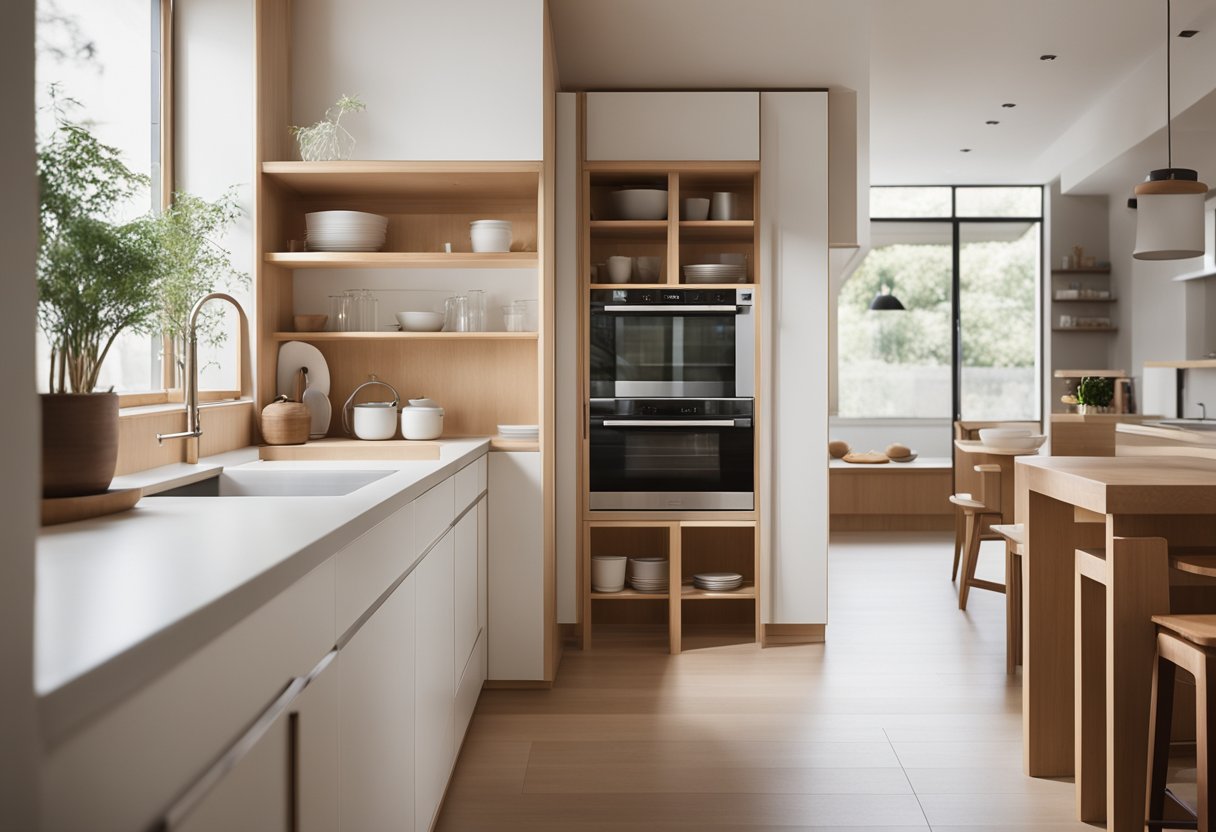
If you’re looking for a kitchen design that is both functional and aesthetically pleasing, you might want to consider a Japanese minimalist kitchen design. This style of kitchen design is characterized by its clean lines, open spaces, and emphasis on natural materials. In this section, we’ll explore the fundamentals of Japanese minimalist kitchen design, including the influence of Japanese and Scandinavian aesthetics, the role of natural materials and color palette, and maximizing functionality in small spaces.
Influence of Japanese and Scandinavian Aesthetics
Japanese minimalist kitchen design is heavily influenced by both Japanese and Scandinavian aesthetics. The Japanese aesthetic is known for its simplicity, minimalism, and focus on natural materials. The Scandinavian aesthetic, on the other hand, emphasizes functionality, clean lines, and a neutral color palette. When these two aesthetics are combined, they create a unique design style known as Japandi.
The Role of Natural Materials and Color Palette
Natural materials play a crucial role in Japanese minimalist kitchen design. Wood, in particular, is a popular material choice for cabinets, flooring, and countertops. The color palette is typically neutral, with white and neutral greys being the most common colors. These colors help to create a sense of calm and tranquility in the kitchen.
Maximising Functionality in Small Spaces
Japanese minimalist kitchen design is well-suited for small spaces. The design emphasizes efficiency and functional design, making the most of the available space. To maximize functionality, consider open shelves instead of cabinets, which can help to create a sense of openness and airiness. Appliances should be chosen carefully, with an emphasis on functionality rather than aesthetics. Counter space is also important, so consider using a narrow kitchen island or a fold-down table to create additional workspace.
In conclusion, a Japanese minimalist kitchen design is a great choice if you’re looking for a functional and aesthetically pleasing kitchen. By combining Japanese and Scandinavian aesthetics, emphasizing natural materials and a neutral color palette, and maximizing functionality in small spaces, you can create a kitchen that is both beautiful and practical.
Creating Serenity and Practicality
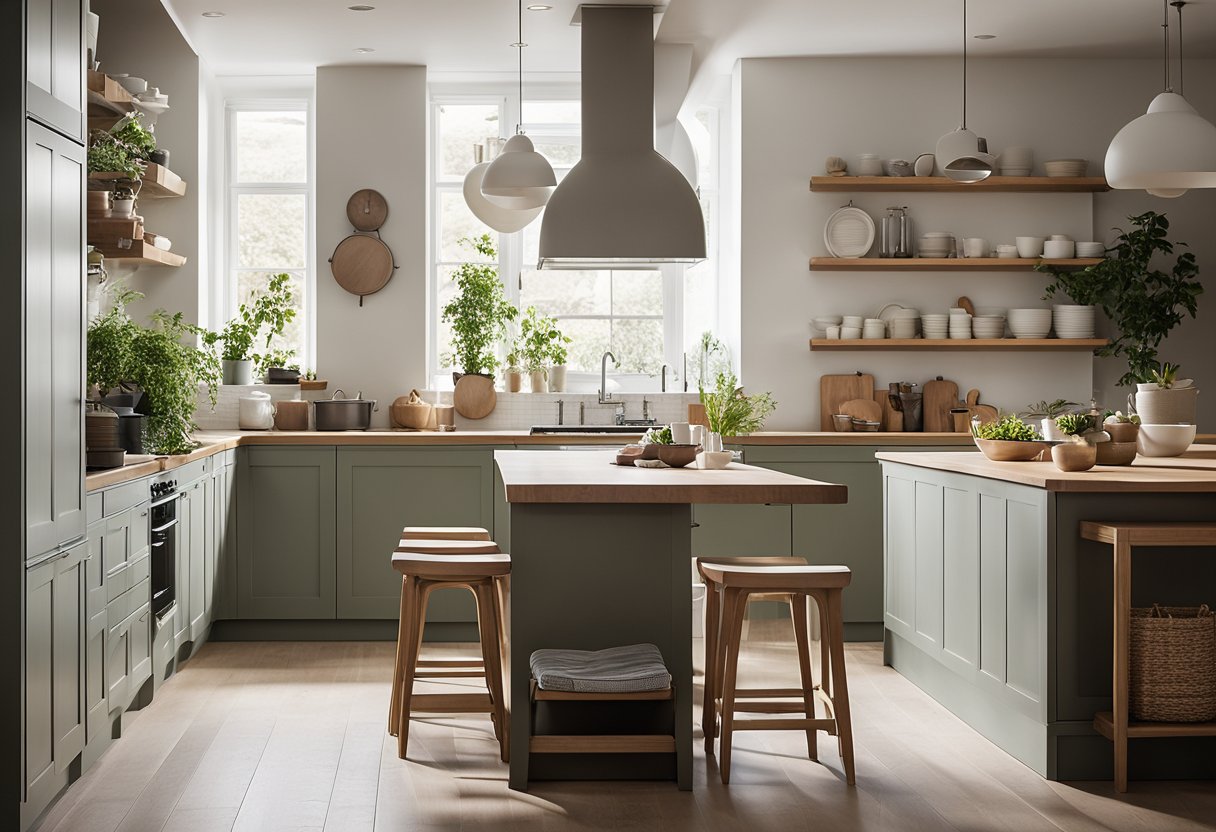
If you’re looking to create a minimalist kitchen that is both serene and practical, then incorporating Japanese design principles is a great place to start. Japanese minimalist kitchen design is all about creating an uncluttered space that is both functional and calming. In this section, we’ll explore some of the key elements of Japanese minimalist kitchen design that will help you achieve this.
Incorporating Zen and Wabi-Sabi Principles
Zen and Wabi-Sabi are two key principles of Japanese design that are often used in minimalist kitchen design. Zen is all about creating a space that is calm and peaceful, while Wabi-Sabi is about embracing imperfections and finding beauty in the natural world. To incorporate these principles into your kitchen, consider using natural materials like wood and washi paper, and embracing imperfections in your design.
Organisation and Decluttering Techniques
Organisation and decluttering are also key elements of Japanese minimalist kitchen design. To create an uncluttered space, consider using cabinets with clean lines and minimal hardware. You can also use a pantry to keep your kitchen essentials out of sight. When it comes to decluttering, consider getting rid of any items that you don’t use regularly, and finding a place for everything else.
Lighting and Spatial Harmony
Lighting and spatial harmony are also important elements of Japanese minimalist kitchen design. To create a space that is calming and serene, consider using natural light as much as possible. You can also use lighting fixtures that have a warm, soft glow. When it comes to spatial harmony, consider an open-concept design that allows for easy movement and clean lines.
By incorporating these key elements of Japanese minimalist kitchen design, you can create a kitchen that is both practical and calming. Whether you’re inspired by the quality and simplicity of Muji or the calm and serene nature of Japanese interiors, there are many ways to create a minimalist kitchen that reflects your personal style.
Frequently Asked Questions
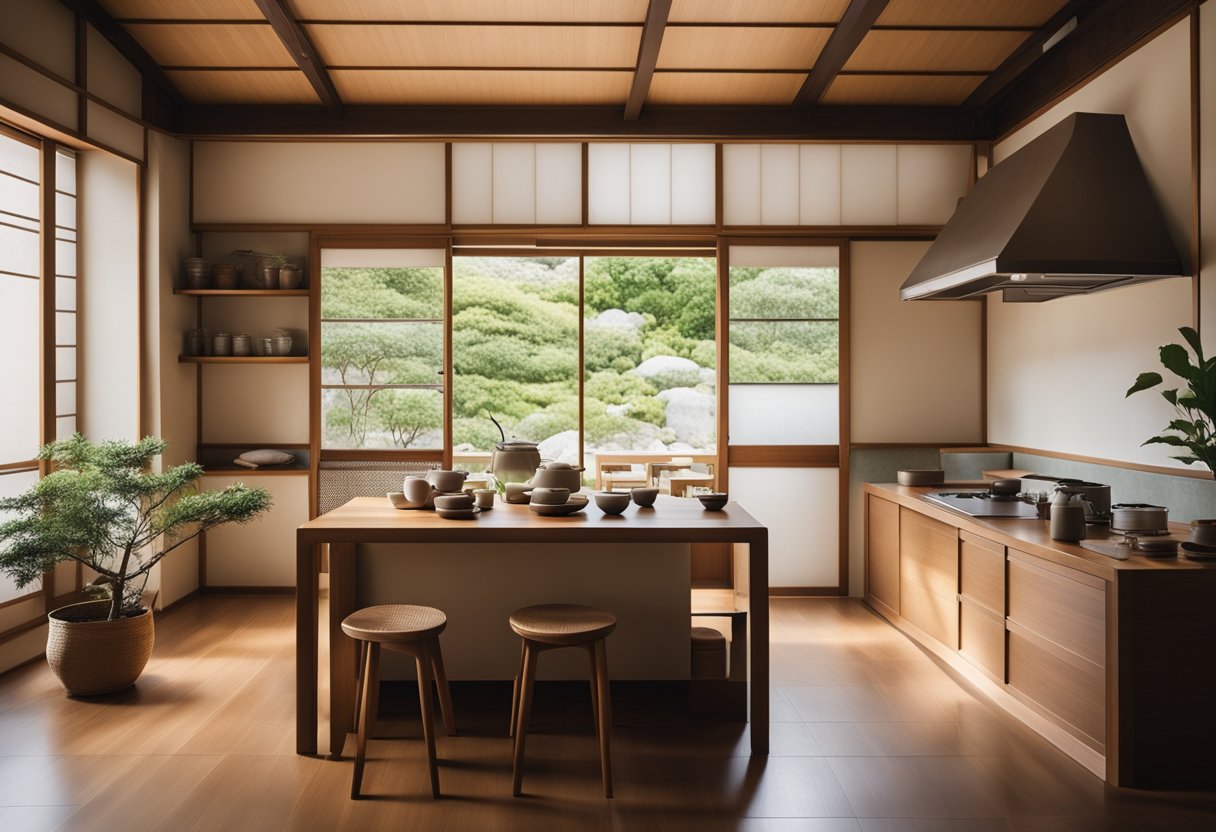
How can I incorporate the principles of Japanese minimalism into my kitchen layout?
To incorporate the principles of Japanese minimalism into your kitchen layout, you need to focus on simplicity, functionality, and natural materials. Start by decluttering your kitchen and only keeping the essential items you use regularly. Use clean lines, simple shapes, and neutral colours to create a calming and serene atmosphere. Also, consider using natural materials like wood, bamboo, and stone to add texture and warmth to your kitchen.
What are the essential elements of a Japanese-inspired minimalist kitchen?
The essential elements of a Japanese-inspired minimalist kitchen include clean lines, open shelving, and minimal ornamentation. Use simple, functional furniture and appliances that blend seamlessly with the overall design. Also, incorporate natural materials like wood, bamboo, and stone to add texture and warmth to your kitchen.
How do I select the perfect colour palette for a vibrant yet minimalist Japanese kitchen?
When selecting a colour palette for your Japanese-inspired minimalist kitchen, choose neutral colours like white, beige, and grey as the base. You can then add pops of colour with natural materials like wood, bamboo, and stone. Also, consider adding greenery to your kitchen to bring in a natural element and add a splash of colour.
What are some innovative storage solutions for maintaining a clutter-free Japanese kitchen?
Innovative storage solutions for maintaining a clutter-free Japanese kitchen include open shelving, built-in cabinets, and hidden storage. Use open shelving to keep your most-used items within reach, and built-in cabinets to hide away less frequently used items. Also, consider using hidden storage solutions like pull-out pantries and under-cabinet storage to maximize your space.
How do I blend modern appliances with traditional Japanese kitchen aesthetics?
To blend modern appliances with traditional Japanese kitchen aesthetics, focus on incorporating appliances with clean lines and simple designs. Also, consider using natural materials like wood and stone to add warmth and texture to your kitchen. You can also use appliances that have a natural, organic look such as copper or brass finishes.
What lighting choices best enhance the serene ambiance of a Japanese minimalist kitchen?
Lighting choices that best enhance the serene ambiance of a Japanese minimalist kitchen include natural light, pendant lighting, and recessed lighting. Use natural light to bring in the outdoors and create a bright and airy atmosphere. Pendant lighting can add warmth and character to your kitchen, while recessed lighting can provide a soft and calming ambiance.

